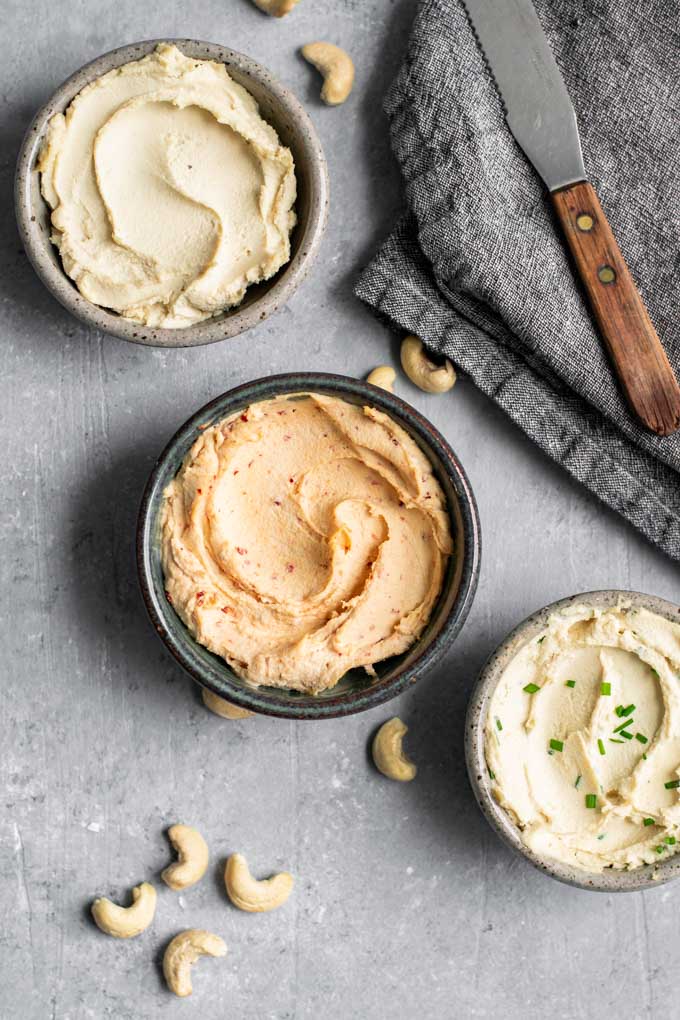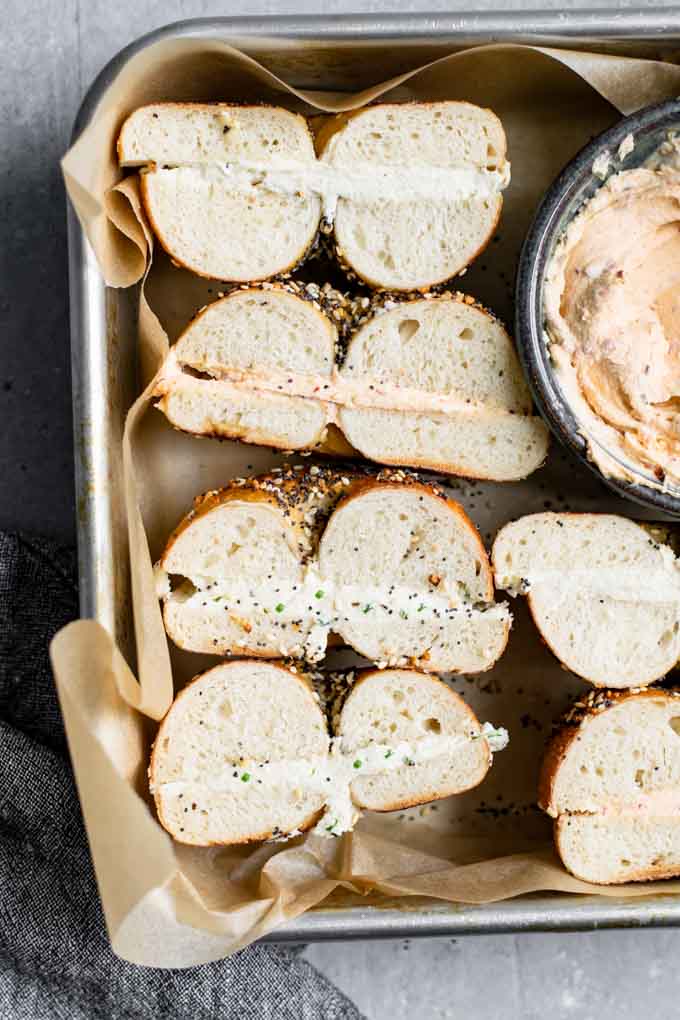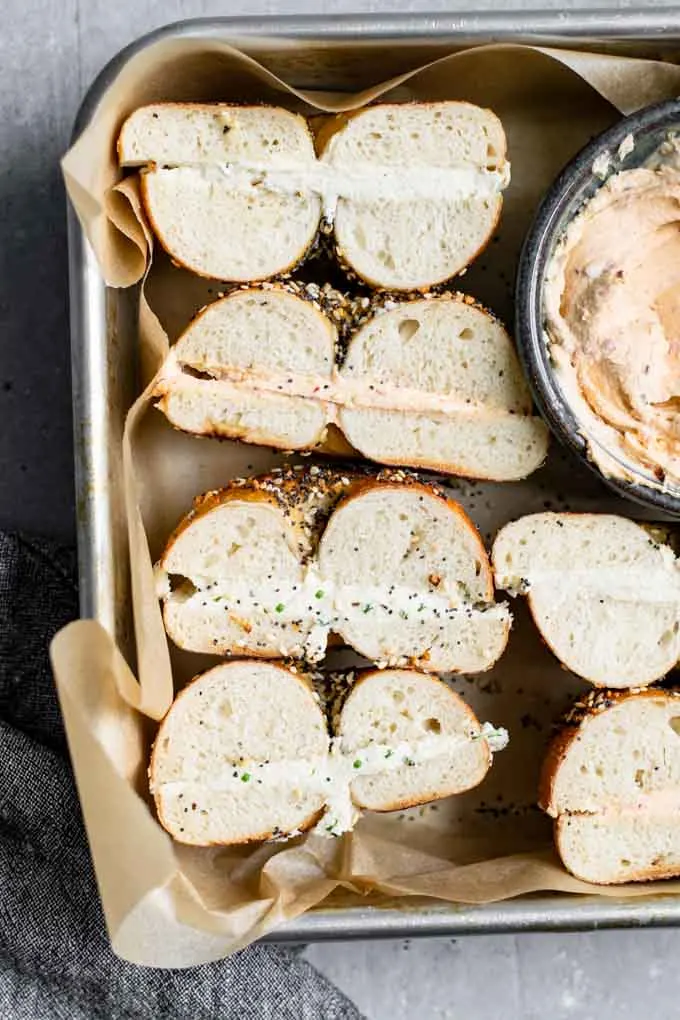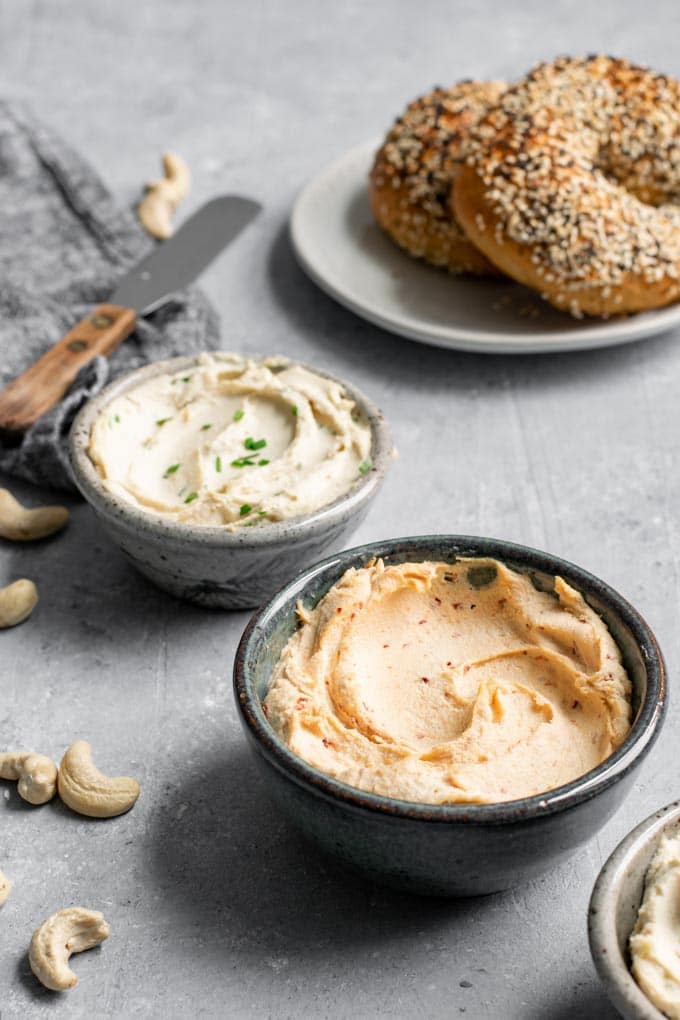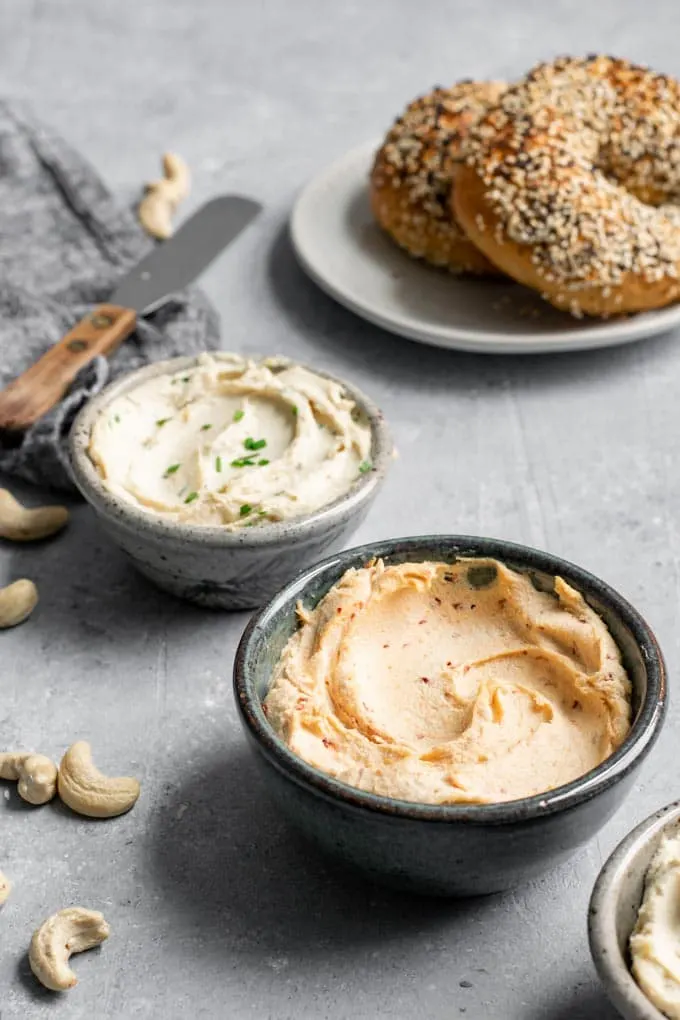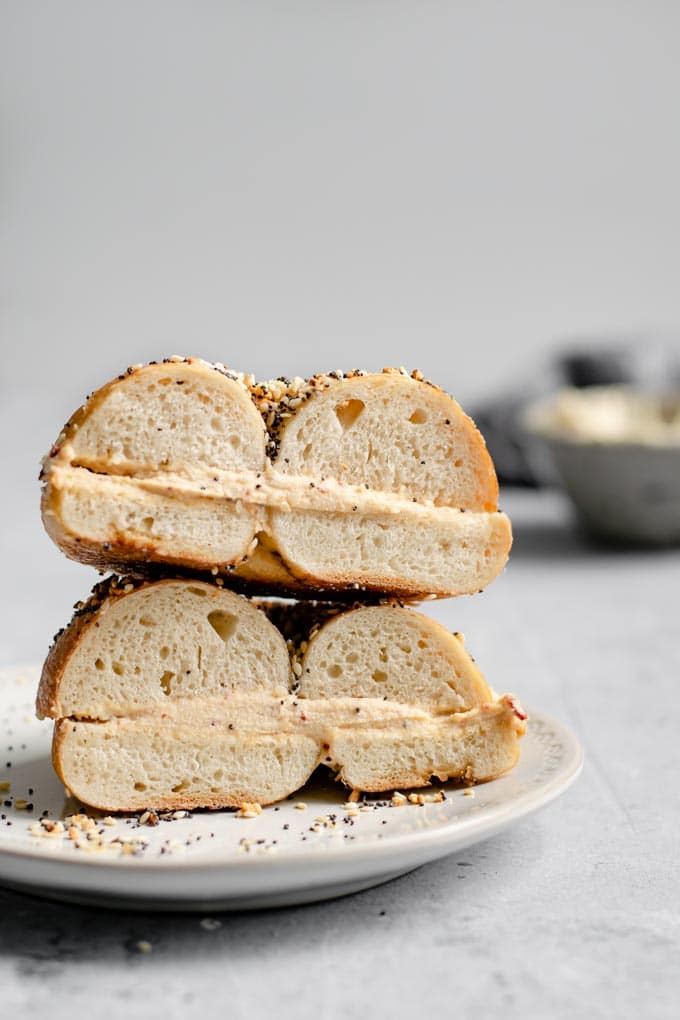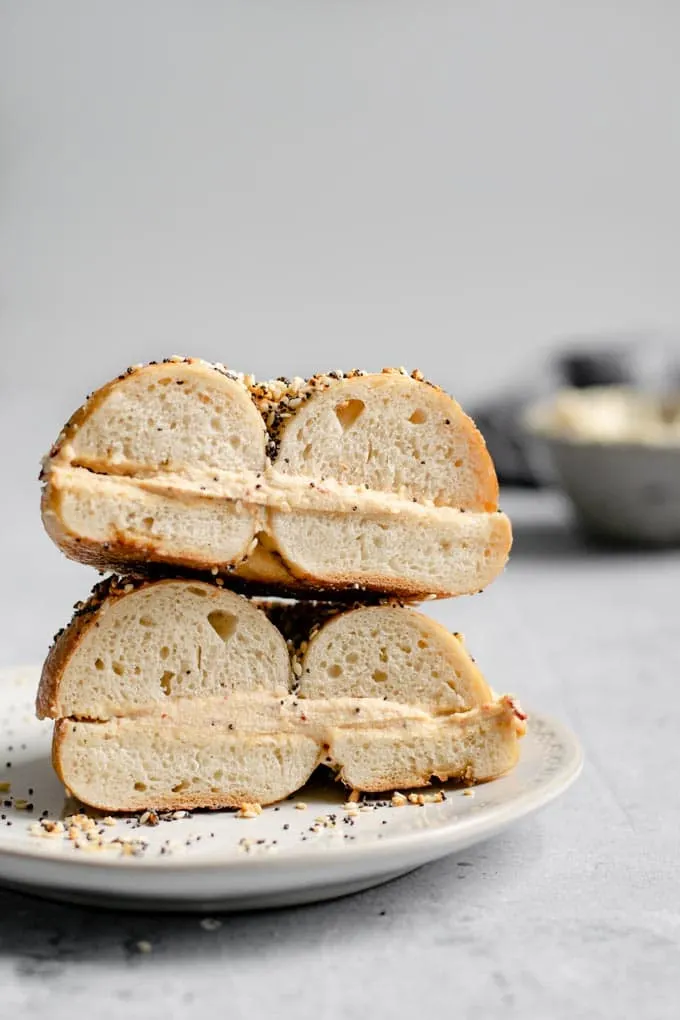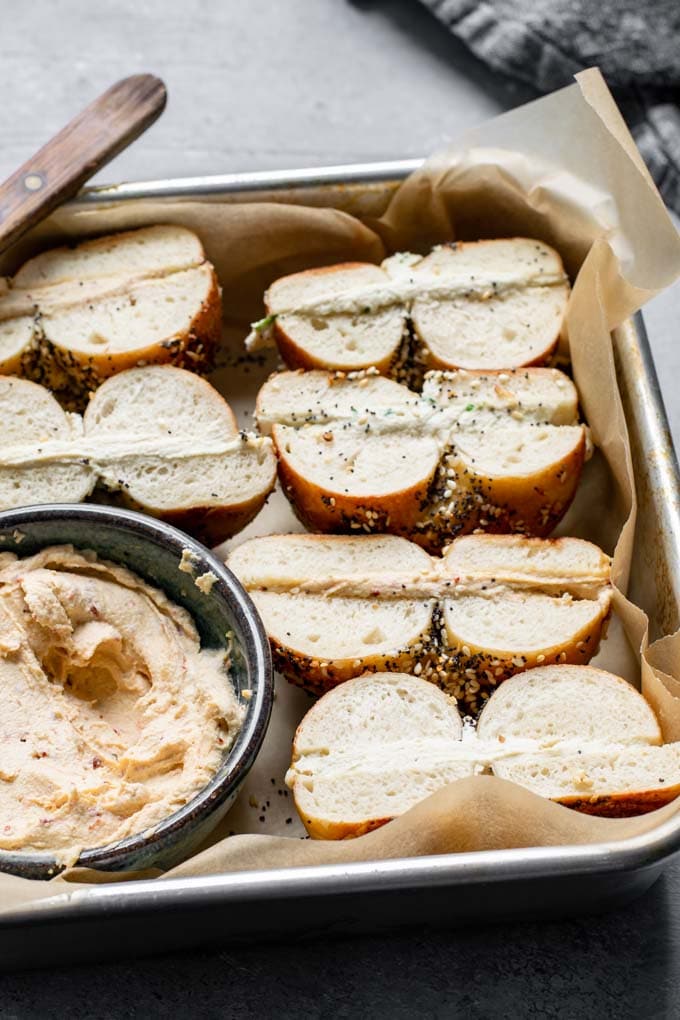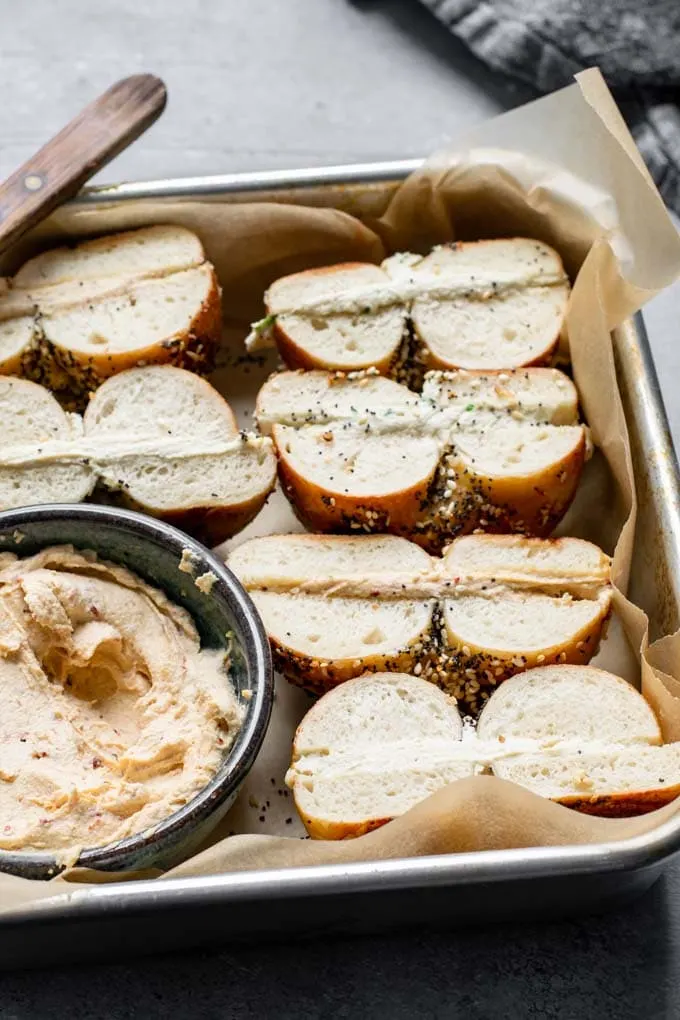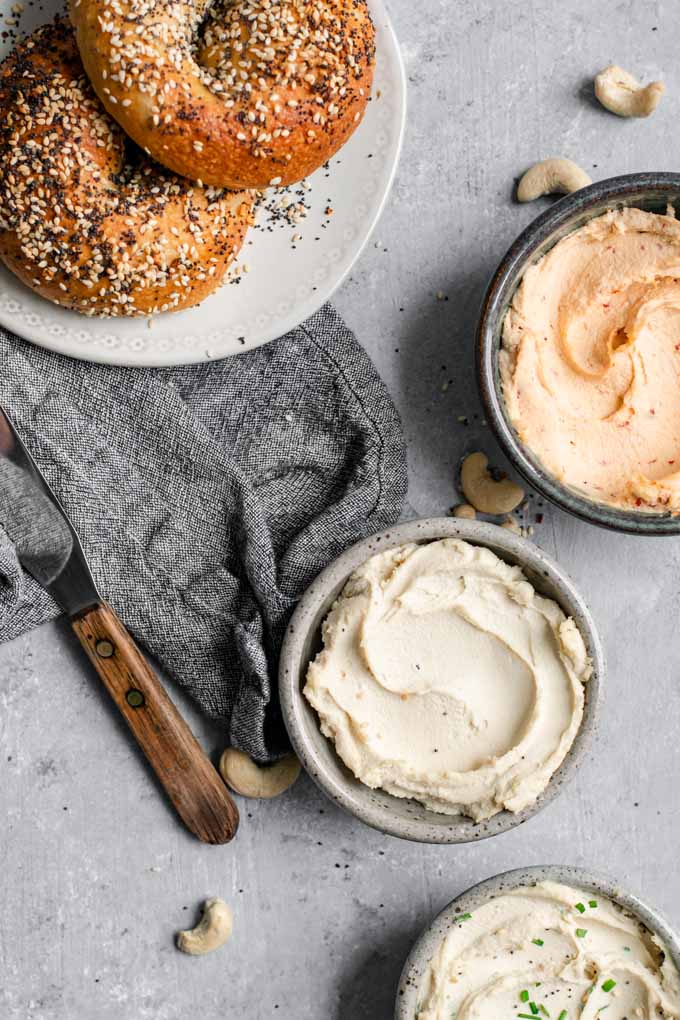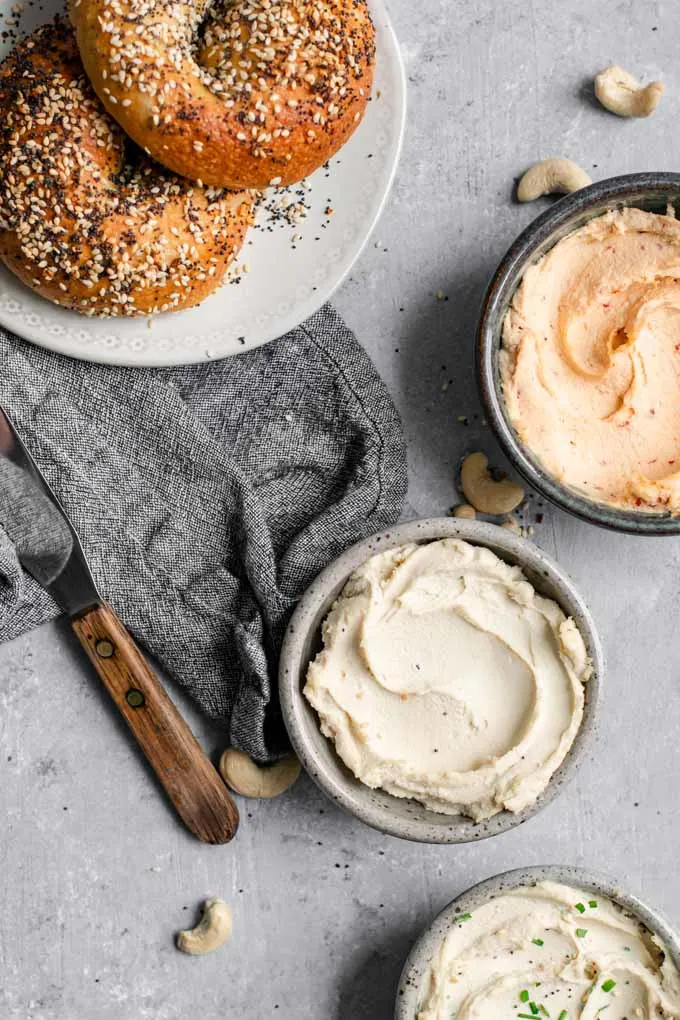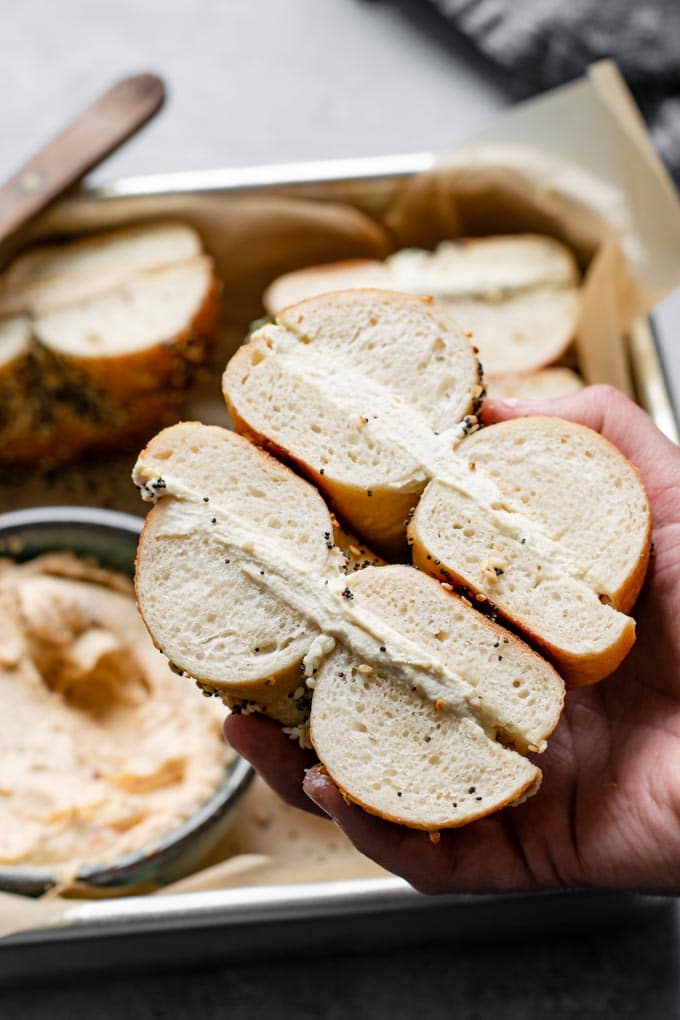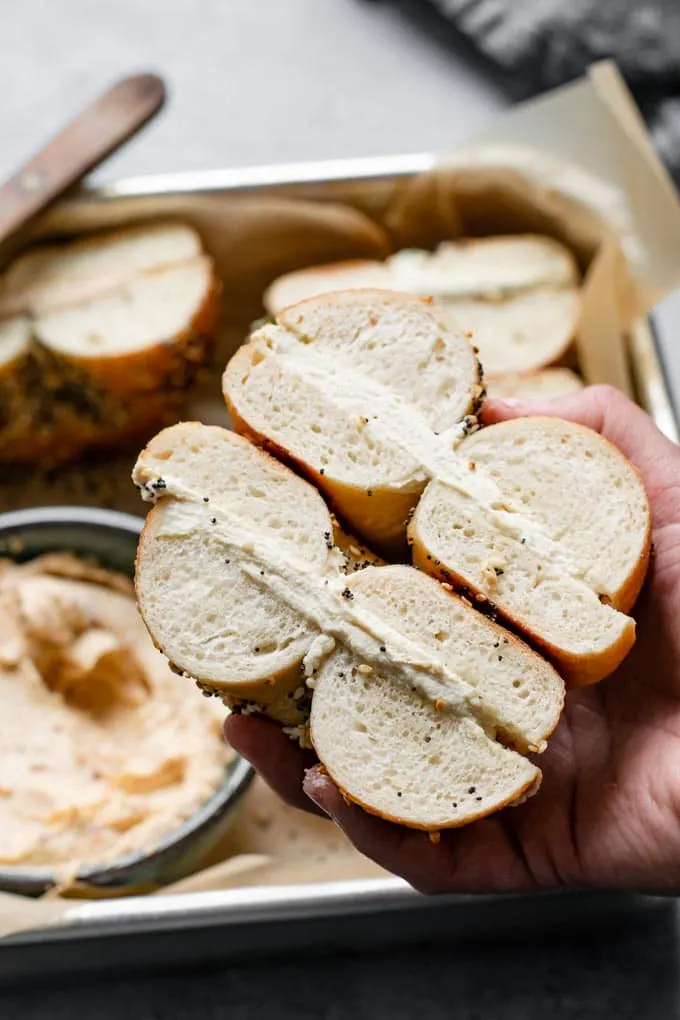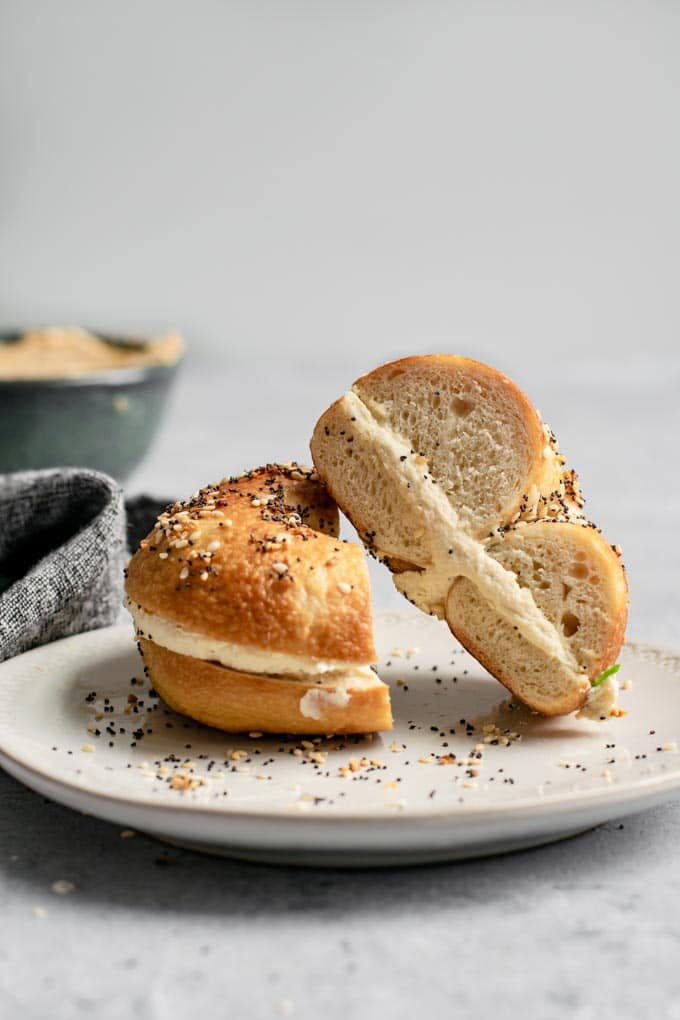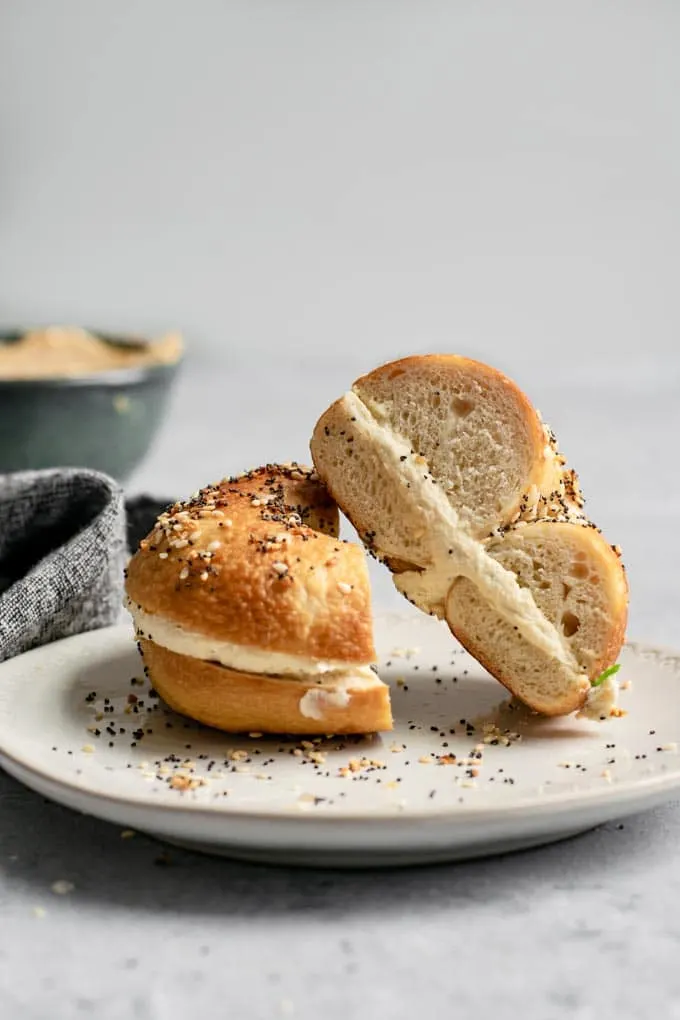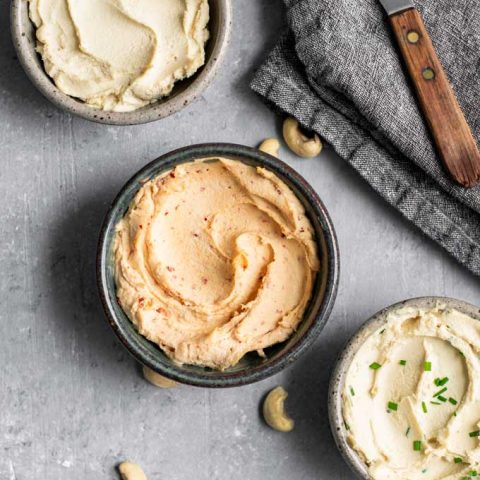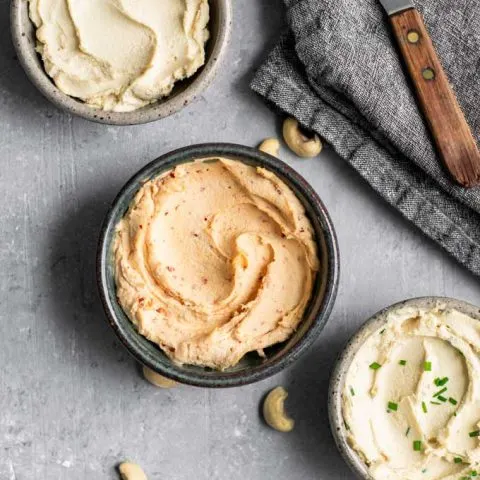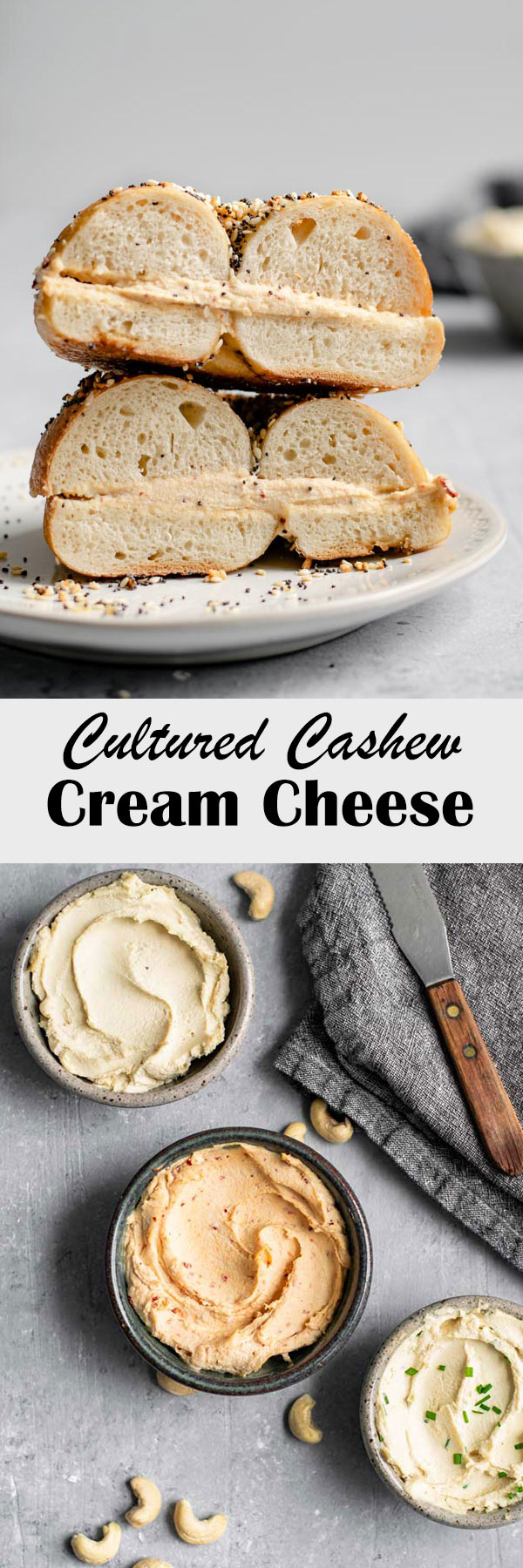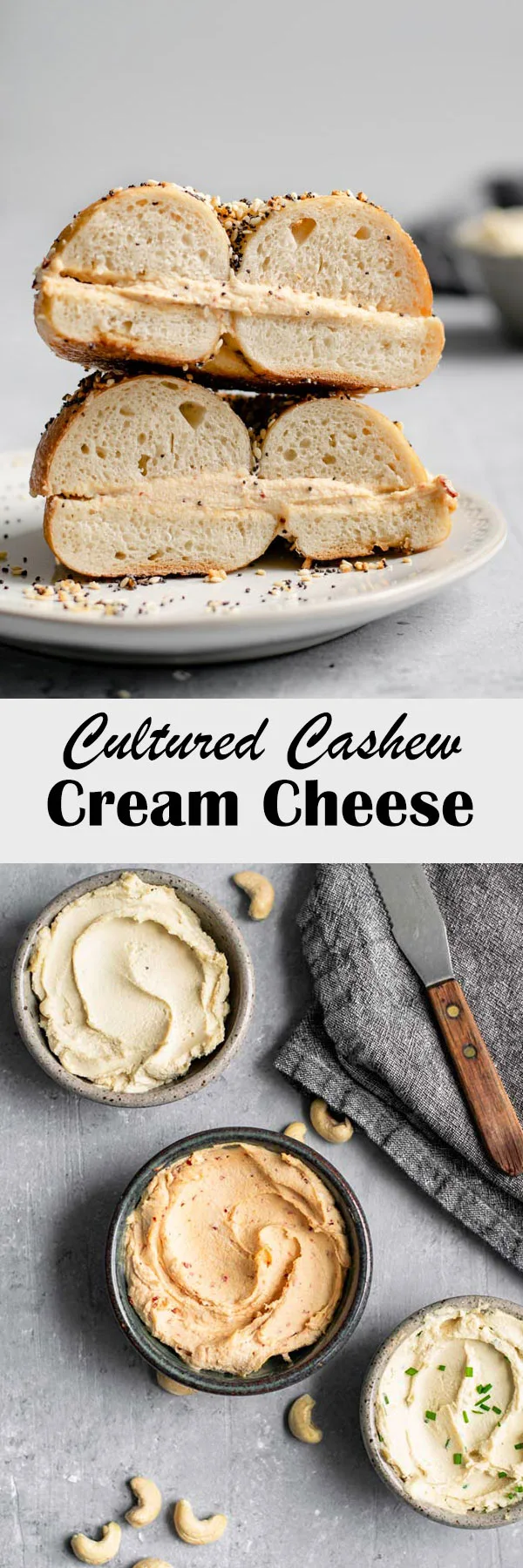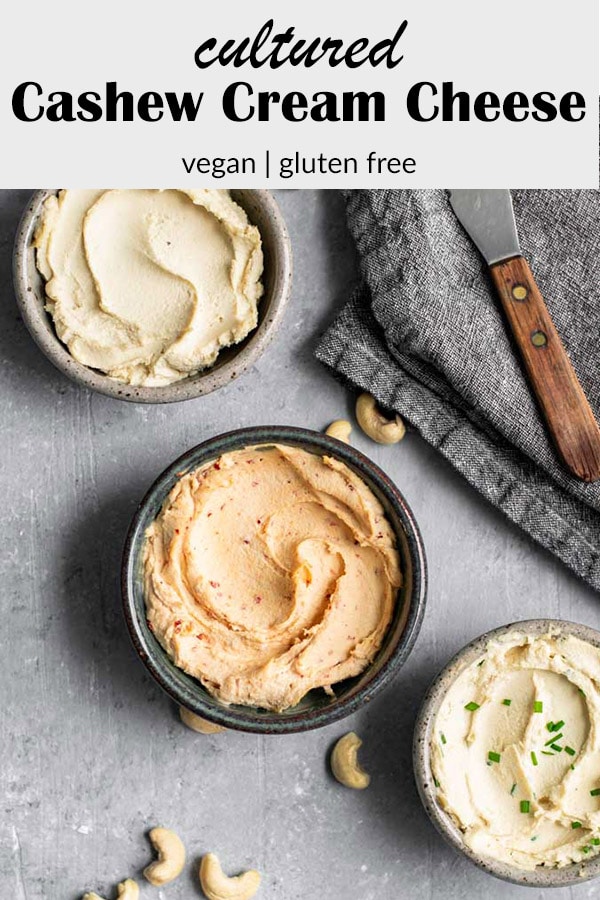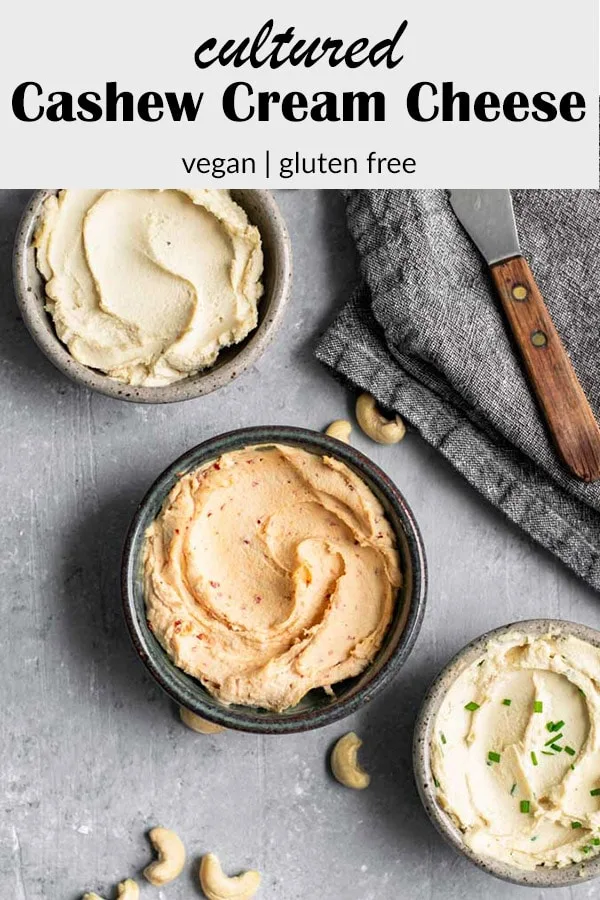If you want your vegan cheese to taste cheesy, you need to culture it. Through culturing we can get that tang, developed flavor, and funk which will hit the spot for all your cheesy cravings. I’m so excited to share this recipe with you, and it’s actually my 200th blog recipe! I honestly can’t think of anything more appropriate than celebrating with some vegan cheese. If you’re only ever going to make one homemade cultured vegan cheese, let this cashew cream cheese be the one. It’s so creamy, flavorful, and delicious! This cultured cashew cheese feeds my most tasty and never ending toast and cream cheese breakfast habit. And trust me, once you start smearing this cashew cream cheese over bread or bagels, you might find your way into becoming a cheesy breakfast bread aficionado! I’ve been making this cheese for the better part of a decade, and over that time I have refined my technique. From the cultures I choose to the when and how of adding the ingredients, I’ve got the recipe down! First make the plain cream cheese base, then you can turn it into you favorite flavored cream cheeses! Here we have one dish of plain cream cheese, one chipotle cream cheese, and the third is a chive cream cheese. All are so delicious! A quick note before we get into the making of this cheese: this cashew cheese is a gluten free recipe. Those Homemade New York Style Bagels it’s served with are not gluten free. I trust that you can make the cheese and use it on the appropriate breads, crackers, or in recipes that fit your needs, gluten free or not!
Why culture the cashew cheese?
Well, I will be the first one to tell you that you can make delicious vegan cheeses without culturing anything. I’ve got a whole section of vegan cheese on this blog and most are not cultured! And if you want a creamy spread without culturing then I recommend my creamy almond cheese, vegan chipotle cheese spread, or my vegan queso fresco. That being said, for the cheesiest of vegan cheeses, you’re going to want to culture it. Culturing is done by adding a probiotic (i.e. healthy bacteria) to a thick cashew cream. It proliferates and develops the sour and funky flavor you would recognize in yogurt and cheeses. Store bought probiotics produce consistent results and are easy to work with. Simply open up the capsules and pour out the powdered cultures. When purchasing your probiotics keep the following in mind: If using capsules with more live cultures you will not need the same volume as they are more potent than the ones with less active cultures.
How to culture the cheese:
First, soak your cashews. Soaking the cashews in cold water softens them and makes it easier for your blender to turn them into an ultra smooth cream. I prefer to soak the cashews in filtered water. I also prefer to use organic whole cashews, as these are of the highest quality. Soak the nuts in cold water on the counter for 2-4 hours, or stick it in the fridge and let soak up to overnight. Drain and rinse the cashews. If they’ve been soaking overnight rinse them with boiling water. We only want to encourage the probiotic cultures that we’re adding, so this will kill any undesirable enzymes. Next, sanitize everything that is going to come into contact with the cashew cheese. Boil a bunch of water then rinse everything with that boiling water. This includes the blender (jug, lid, and tamper), the glass bowl to culture the cheese in, spoons, spatulas, and measuring cups. Add the cashews into the blender (or food processor) along with distilled water and a pinch of salt. If you can’t find/don’t want to buy bottled distilled water then boil water for a few minutes and let it cool completely and use that water. Blend, blend blend, using the tamper if your blender has one or pausing to scrape down the sides as needed. If you have a high powered blender like a Vitamix or Blendtec then this will only take a couple of minutes. Otherwise this could take 10 minutes. A food processor can work instead of a blender, but it won’t get as perfectly smooth of a cheese. If needed you can add a little more water to blend. But keep in mind that the thicker your cashew cream is, the thicker the final cheese will be. Once your cashew cheese is smooth, transfer it to a sanitized glass mixing bowl using a sanitized silicon spatula. Ideally no metal should come into contact with the cheese once the cultures are added. This means use a glass/pyrex bowl (ceramic would work as well) and wooden spoons and silicon spatulas only. Add the probiotic and stir it into the thick cashew cream using that sanitized wooden spoon or silicon spatula. Sprinkle some salt over the top to discourage unwanted cultures, and then cover. A note about the salt. I recommend using non-iodized salt. This is because there might be some affect the iodine has on the culture and its ability to proliferate. Now, it’s not completely conclusive as far as the research is concerned, but this is a case where I say better safe than sorry. Especially when sorry looks like throwing out expensive cashews.
Culturing takes anytime between 1-3 days.
The time it takes depends on ambient temperature and humidity. In the summer I find culturing time to be 24-36 hours. In the winter that creeps up closer to 48-72 hours. Stir the cheese with a clean (sanitized with some boiling water) wooden or silicon spoon/spatula after the first 12 hours, then stir every 12-24 hours after that. Start tasting it after the first 12-24 hours to see how it’s coming along. Once it reaches the desired level of funky and tangy (and again you don’t want to go too far, cream cheese is mild tasting!) it’s ready to mix together with the rest of the flavors and any add ins you’d like to include. The cheese will thicken as it cultures, and continue to thicken after it goes into the fridge. Because of this I recommend mixing in the rest of the ingredients before sticking it in the fridge, as it becomes harder to stir after!
Have it as a plain cream cheese or make it into a flavored cream cheese.
When the cheese is as cultured as you’d like it to be, mix in the nutritional yeast and salt to taste. At this point you are safe to use metal in contact with the cheese. Nutritional yeast is a deactivated yeast, and is full of cheesy, nutty flavor as well as vitamins and minerals. I like to use just a little of it in my cultured cashew cream cheese to turn up the cheesy flavor. One tablespoon of it per cup of cashews is enough to get a bit of cheesy flavor without having it taste like nutritional yeast. If you are sensitive to the taste, you can always use less or don’t use it at all. At this point it’ll be a delicious plain cashew cream cheese. Use it as is, or doctor it up to make your favorite flavored cream cheese! Here I’ve left one portion plain, mixed in seeded and minced chipotles in adobo to one, and minced chives to the third. How much you want to add is kind of up to you, note that flavors will meld as it chills in the fridge. I hope that making your own cultured cashew cream cheese isn’t too daunting because it is life changing! I love having some on hand at all times, it’s so delicious. I’ve shared this cashew cream cheese with so many people over the years, vegan and not, and everyone has loved it. Now, you can make it too! If you make this vegan cultured cashew cream cheese, leave a comment below and rate the recipe on the recipe card. And please share your photos with me on Instagram, tag @thecuriouschickpea and #thecuriouschickpea. I love seeing your recreations! For culturing the cheese, do not let any metal touch the mixture as it can inhibit the probiotics. Use a glass (pyrex) mixing bowl and silicon spatulas with either wooden or silicon handles. Make sure everything is clean and sanitized with boiling hot water. Use non-iodized salt as iodine can also inhibit the cultures. If using probiotics with a lot more than 3.4 billion cultures per capsule (like 10 billion), use about half as much probiotic. The nutritional yeast won’t have a strong flavor in the final cheese, but adds some cheesy flavor. If you don’t like nutritional yeast you can use less. If followed exactly, there shouldn’t be any growth of undesirable mold. However, in very warm and humid environments occasionally a small amount of fuzzy white mold can grow on top. I will scoop off this mold to get to the cheese below and then stop the fermentation, but will eat the cheese. If the mold color is pink or anything other than white, or if the cashew cheese develops an off taste, do not eat it. In any case, use your best judgement.
Jarrow Formulas Jarro-Dophilus Allergen Free, 15 Billion Cells Per Cap, 30 Capsules (Cool Ship, Pack of 3) KAL Nutritional Yeast Flakes | Vitamin B12, Vegan, Non-GMO, Gluten Free
